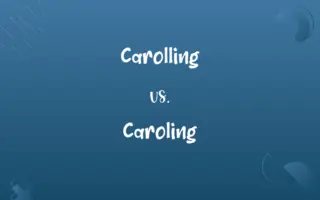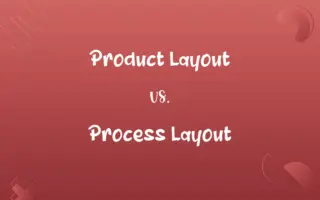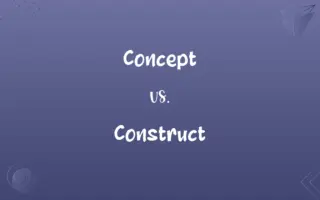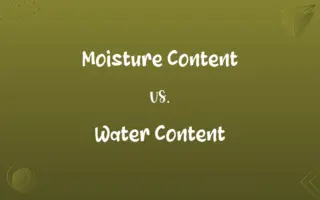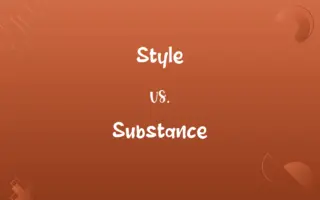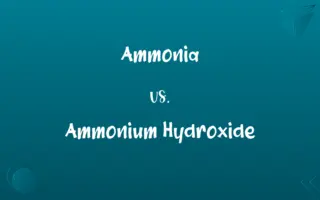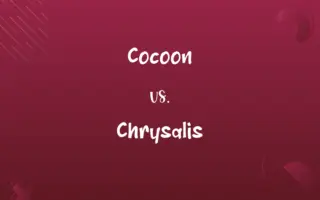SN1 Reactions vs. SN2 Reactions: Know the Difference

By Shumaila Saeed || Updated on December 25, 2023
SN1 Reactions are two-step, carbocation intermediate processes, often in polar solvents; SN2 Reactions are one-step, bimolecular, backside attacks, generally in polar aprotic solvents.

Key Differences
SN1 Reactions involve a two-step mechanism starting with the formation of a carbocation intermediate, making them sensitive to the stability of this intermediate. In contrast, SN2 Reactions occur in a single, concerted step without intermediates, involving a backside attack on the substrate.
Shumaila Saeed
Dec 15, 2023
The rate of SN1 Reactions is influenced by the nature of the leaving group and the stability of the carbocation formed. Conversely, SN2 Reactions are significantly affected by steric hindrance, as the attacking nucleophile requires direct access to the electrophilic carbon.
Shumaila Saeed
Dec 15, 2023
In SN1 Reactions, the rate-determining step involves only the substrate, hence they follow first-order kinetics. SN2 Reactions, however, involve both the substrate and the nucleophile in the rate-determining step, exhibiting second-order kinetics.
Shumaila Saeed
Dec 15, 2023
SN1 Reactions typically occur in polar protic solvents, which stabilize the carbocation intermediate. In contrast, SN2 Reactions are favored in polar aprotic solvents, which do not stabilize the transition state as much, allowing faster nucleophilic attack.
Shumaila Saeed
Dec 15, 2023
Stereochemistry plays a vital role in differentiating SN1 and SN2 Reactions. SN1 Reactions can lead to racemization due to the planar nature of the carbocation intermediate. SN2 Reactions, however, lead to inversion of configuration due to the backside attack mechanism.
Shumaila Saeed
Dec 15, 2023
ADVERTISEMENT
Comparison Chart
ADVERTISEMENT
SN1 Reactions and SN2 Reactions Definitions
SN1 Reactions
SN1 Reactions are unimolecular nucleophilic substitution reactions.
In tertiary alkyl halides, SN1 reactions are common due to stable carbocations.
Shumaila Saeed
Dec 04, 2023
SN2 Reactions
SN2 Reactions are sensitive to steric hindrance.
The SN2 reaction of 2-bromo-2-methylpropane is extremely slow due to steric effects.
Shumaila Saeed
Dec 04, 2023
SN1 Reactions
SN1 involves formation of a carbocation intermediate.
The solvolysis of tert-butyl chloride in water is a classic SN1 reaction.
Shumaila Saeed
Dec 04, 2023
SN2 Reactions
SN2 involves a backside attack mechanism.
The reaction of cyanide ion with primary alkyl halides typically follows an SN2 pathway.
Shumaila Saeed
Dec 04, 2023
SN1 Reactions
SN1 Reactions often lead to racemization.
When 2-bromooctane undergoes an SN1 reaction, the product is a racemic mixture.
Shumaila Saeed
Dec 04, 2023
ADVERTISEMENT
SN2 Reactions
SN2 Reactions exhibit second-order kinetics.
The rate of ethyl chloride conversion to ethyl alcohol in an SN2 reaction depends on both reactants.
Shumaila Saeed
Dec 04, 2023
SN1 Reactions
SN1 Reactions follow first-order kinetics.
The rate of conversion of n-butyl chloride to n-butyl alcohol is an SN1 process.
Shumaila Saeed
Dec 04, 2023
SN2 Reactions
SN2 Reactions are bimolecular nucleophilic substitution reactions.
Methyl bromide reacts with hydroxide ion in an SN2 manner.
Shumaila Saeed
Dec 04, 2023
SN1 Reactions
SN1 is favored in polar protic solvents.
Ethanol is a preferred solvent for SN1 reactions due to its polarity.
Shumaila Saeed
Dec 04, 2023
SN2 Reactions
SN2 is favored in polar aprotic solvents.
Acetone, being a polar aprotic solvent, is ideal for SN2 reactions.
Shumaila Saeed
Dec 04, 2023
Repeatedly Asked Queries
What factors affect the rate of SN1 reactions?
The rate of SN1 reactions is influenced by the stability of the carbocation intermediate and the nature of the leaving group.
Shumaila Saeed
Dec 15, 2023
What type of solvent is best for SN1 reactions?
Polar protic solvents are ideal for SN1 reactions as they stabilize the carbocation intermediate.
Shumaila Saeed
Dec 15, 2023
Why are SN2 reactions sensitive to steric hindrance?
In SN2 reactions, steric hindrance affects the nucleophile’s ability to access the electrophilic carbon, thus impacting the reaction rate.
Shumaila Saeed
Dec 15, 2023
Why are polar aprotic solvents preferred for SN2 reactions?
Polar aprotic solvents are preferred for SN2 reactions as they do not stabilize the transition state, allowing faster nucleophilic attack.
Shumaila Saeed
Dec 15, 2023
What is the kinetic order of SN2 reactions?
SN2 reactions follow second-order kinetics.
Shumaila Saeed
Dec 15, 2023
What defines an SN1 reaction?
SN1 reactions are characterized by a two-step mechanism with a carbocation intermediate.
Shumaila Saeed
Dec 15, 2023
What is the kinetic order of SN1 reactions?
SN1 reactions follow first-order kinetics.
Shumaila Saeed
Dec 15, 2023
How do SN2 reactions occur?
SN2 reactions occur through a one-step bimolecular mechanism involving a backside attack.
Shumaila Saeed
Dec 15, 2023
How does the attacking nucleophile approach in SN2 reactions?
In SN2 reactions, the nucleophile attacks from the opposite side of the leaving group.
Shumaila Saeed
Dec 15, 2023
Can tertiary substrates undergo SN2 reactions?
Tertiary substrates are generally not suitable for SN2 reactions due to significant steric hindrance.
Shumaila Saeed
Dec 15, 2023
Can secondary substrates undergo SN1 reactions?
Yes, secondary substrates can undergo SN1 reactions, especially if they form stable carbocations.
Shumaila Saeed
Dec 15, 2023
Are primary substrates suitable for SN2 reactions?
Yes, primary substrates are ideal for SN2 reactions due to minimal steric hindrance.
Shumaila Saeed
Dec 15, 2023
Why is the rate of SN2 reactions dependent on both the substrate and nucleophile?
In SN2 reactions, both the substrate and nucleophile are involved in the rate-determining step, affecting the reaction rate.
Shumaila Saeed
Dec 15, 2023
Are SN1 reactions reversible?
SN1 reactions can be reversible, especially in the presence of a strong nucleophile.
Shumaila Saeed
Dec 15, 2023
What role does the leaving group play in SN1 reactions?
In SN1 reactions, the leaving group's ability to depart easily is crucial for the reaction to proceed.
Shumaila Saeed
Dec 15, 2023
What effect does the solvent have on the rate of SN2 reactions?
The solvent in SN2 reactions can influence the nucleophile’s reactivity and the overall reaction speed.
Shumaila Saeed
Dec 15, 2023
How does stereochemistry differ in SN1 and SN2 reactions?
SN1 reactions can lead to racemization, while SN2 reactions result in inversion of configuration.
Shumaila Saeed
Dec 15, 2023
What happens to the configuration in an SN1 reaction?
The configuration in an SN1 reaction often leads to a mixture of retention and inversion, resulting in racemization.
Shumaila Saeed
Dec 15, 2023
Can SN1 reactions occur with primary substrates?
SN1 reactions are less favorable with primary substrates due to unstable carbocation formation.
Shumaila Saeed
Dec 15, 2023
What is a common characteristic of nucleophiles in SN2 reactions?
Nucleophiles in SN2 reactions are typically strong and unhindered, allowing for efficient backside attack.
Shumaila Saeed
Dec 15, 2023
Share this page
Link for your blog / website
HTML
Link to share via messenger
About Author
Written by
Shumaila SaeedShumaila Saeed, an expert content creator with 6 years of experience, specializes in distilling complex topics into easily digestible comparisons, shining a light on the nuances that both inform and educate readers with clarity and accuracy.





